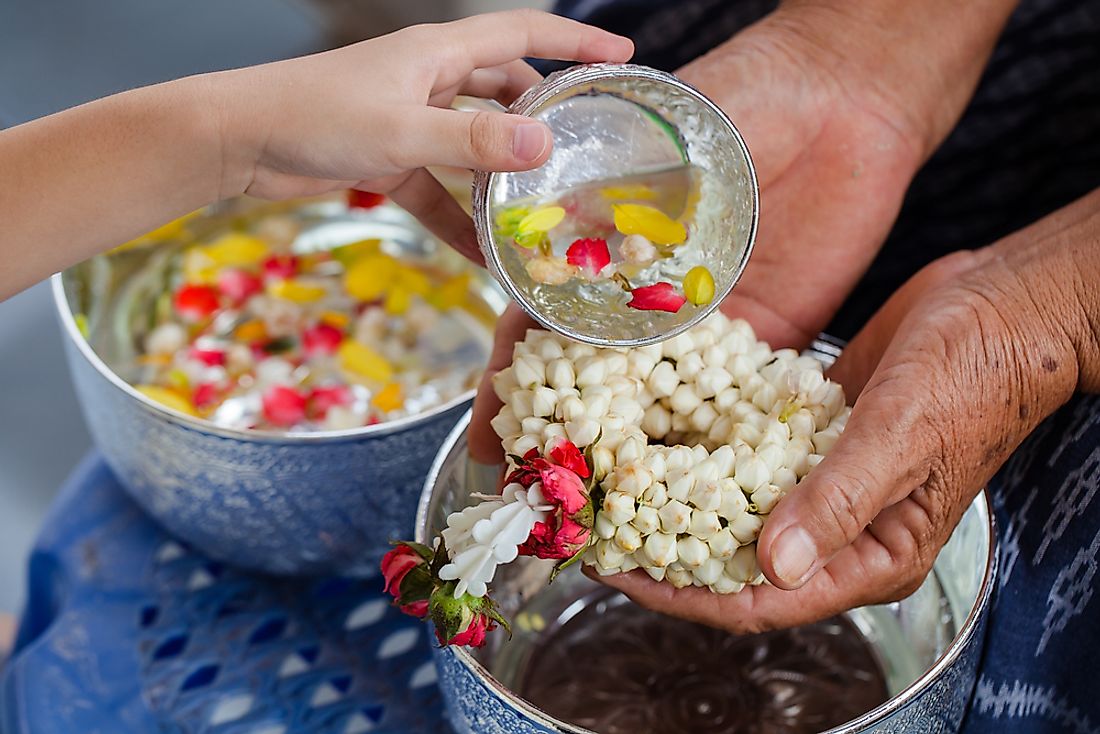Songkran - Holidays Around the World

Songkran refers to the traditional New Year celebrated from April 13 to April 15 every year in Sri Lanka, Myanmar, Laos, Cambodia, Thailand, and parts of China, Vietnam, and Northern India. Songkran is derived from the Sanskrit term Sankranti which means 'trans-migration of the sun from one Rashi to the next.' The Songkran festival starts when the first astrological sign of the Zodiac is seen (when the sun transits the constellations of Aries). The grand Songkran celebration usually occurs during Aries which indicates the start of a new period and the New Year.
History of Songkran
Songkran borrows a lot from the ancient Indian festival of the Makar Sankranti. In India, Makar Sankranti marks the beginning of spring, and the Indians celebrate this festival in January every year. The celebrations coincide with the rising of Aries in the astrological-chart and with the start of a new-year of many South east and South Asia calendars.
Three Days of Songkran
The festival is a three day affair and each day has its meaning and name.
Maha Songkran
Maha Songkran is the first day of the New Year festivals, and it marks the end of the previous year and the start of a new one. On this day, everyone dresses up nicely and burns an incense stick at the shrines. Each member of the family offers thanks for the teachings of the Buddha by kneeling, bowing, and prostrating themselves thrice before his image. They also wash their faces with the holy water in the morning, at noon they wash their chests, and in the evening they finish by cleaning their feet before going to sleep.
Virak Vanabat
During the second day of the festival, everyone contributes to the less fortunate in the community which includes the low-income families, servants, and homeless, among others. On this day, the families attend a dedication ceremony for their ancestors at the monasteries.
Vearak Loeng-sak
During the third day of the festivals, the Buddhist wash their elders and the statues of Buddha with some perfumed water which symbolizes washing away of evil actions with clean water. The locals also believe that this is a kind deed which will bring them prosperity, happiness, good luck, and longevity in their lives. By washing the elderly, the young ones are blessed and advised on how to live their lives.
Rituals and Customs
Usually, the locals bring sand to the temple grounds and then build mounds or stupas which are decorated before being given to the monks. The locals can either make the sand stupas on the beach or bring sand to the temple. They are then decorated with flowers, white lines, and flags and finally splashed with water. To Laos, the mound symbolizes a mountain where the daughters of King Kabinlaphrom kept his head after his death, but to others it represents Buddha. The locals also build four smaller mounds surrounding the big stupas which represent Buddha’s disciples Maha Kassapa, Ananda, Sariputta, and Moggallana.
Another ritual done on this day to make merit is setting free some animals. The locals believe that even the animals need to be free. Some of the animals used during this festival include eels, birds, crabs, tortoises, and fish among others.
Songkran is called a water festival in other places like Thailand, and during this festival, the young ones pour water on the elder relatives or the community.











